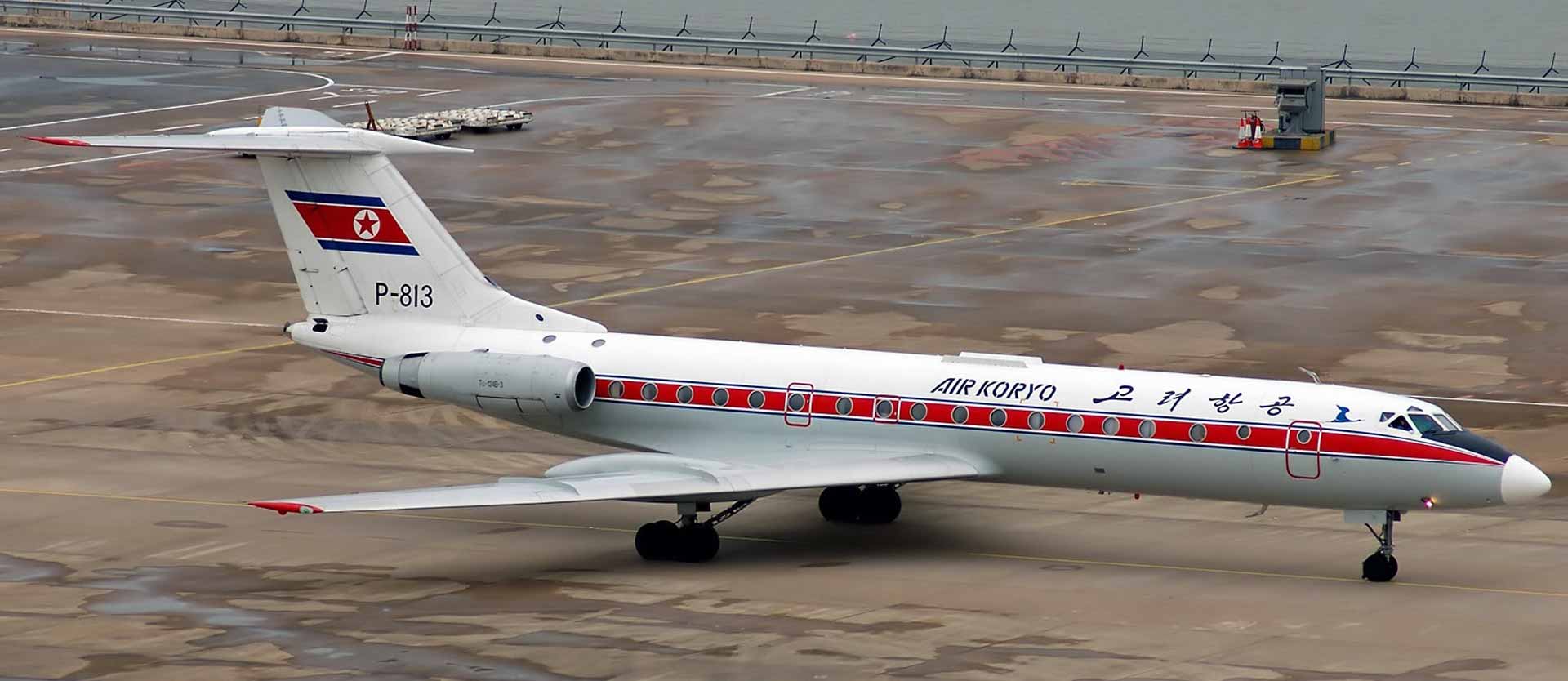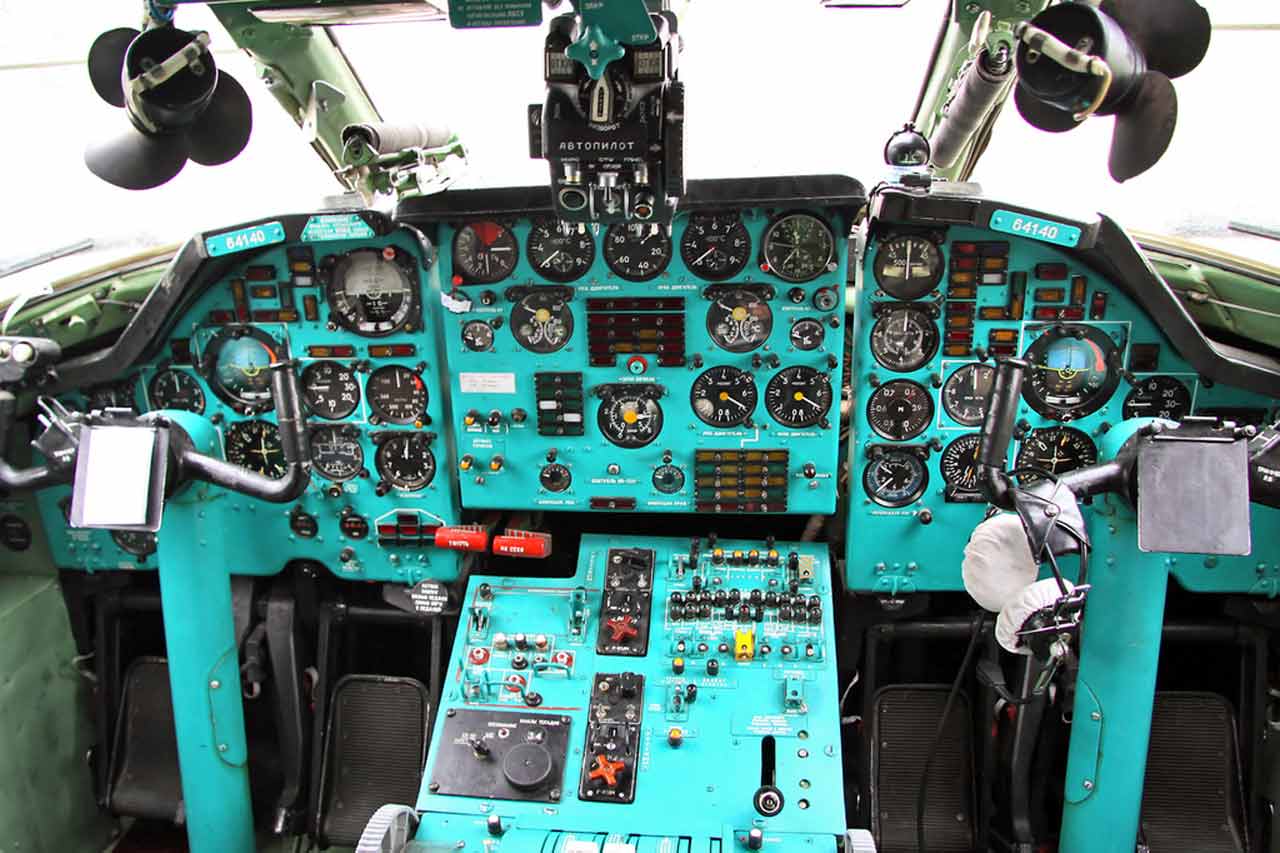Great success at the third go
The Tupolev 134 is undoubtedly a legendary aircraft in the history of the Soviet Union’s aviation industry. It was the workhorse of Aeroflot and became an export hit in the communist sister states of the USSR. In the West, however, it was uncompetitive, mainly because of its high fuel consumption.
Two last TU-134Bs were delivered to the North Korean airline Choson Minhang in 1989. Renamed Air Koryo in 1993, the two jets are reportedly still operating in domestic North Korean service today. Photo by Mark Tang_CC
Strictly speaking, the history of the TU-134 began in the early 1950s with the development of the Soviet Union’s first jet bomber, the TU-16, by the Moscow-based OKB Tupolev design bureau. At the behest of the Politburo of the Communist Party of the Soviet Union, still under Joseph Stalin, Tupolev had to develop a jetliner that would literally make the West appear outdated. After the development of the British De Havilland Comet was abruptly interrupted in 1954 due to design flaws, the Soviets saw an opportunity to develop a civilian airliner from the TU-16 relatively quickly. To accommodate at least two seats each on the right and left of the aisle, the fuselage’s diameter had to be extended by 50 cm to 3.40 meters. The basic concept, however, remained unchanged.
Three TU-134s of the post-Soviet and now Russian Aeroflot, whose modern design of the turn of the millennium did not match the age of the jets, which were well over 30 years old, provide an atmospheric picture here. At the behest of the Russian government, all of Aeroflot’s TU-134s were retired by 2012. Photo: Alexandr Markin_CC
As the TU-104, the twin-jet aircraft first appeared in the West at London-Heathrow Airport in 1956. This was at a time when at least the British, with the Bristol Britannia, had a technically highly innovative aircraft, but “only” a turboprop, ready for serial production – not to mention the manufacturers from the USA. For a short time, the Soviets actually had the edge. In 1960, the TU-104 got a smaller sister called the TU-124, which, in addition to aerodynamic improvements, got turbofan engines for the first time.
Starting in 1968, the East German airline Interflug operated a total of 24 Tupolev TU-134s, including six of the first series. This is one of them with the registration DM-SCZ and re-registered to DDR-SCZ in 1981. Photo: RuthAS_CC
Soviet counter-design to the Caravelle
But sales figures remained rather meager, which is why another event became important. In the same year, Nikita Khrushchev, then head of state and party, made a state visit to France and took the opportunity to visit the Aérosalon in Le Bourget. He was so enthusiastic about the Sud Aviation “Caravelle” presented there that he ordered the immediate development of a Soviet counter-design. At the heart of the enthusiasm were the Caravelle’s tail-mounted engines, which provided unrivaled low-noise and generally quiet flight. The order went once again to the OKB Tupolev experimental design bureau, and there, with the knowledge gained from the TU-104 and TU-124 behind them, they developed a jet with the two engines at the tail – which had become fashionable – as could be seen following the Caravelle, most notably in the example of the Douglas DC-9 presented in 1965.
As the world’s largest airline operating well over 300 units, the Soviet Aeroflot was also by far the largest operator of the TU-134, which it kept in service for almost 40 years. Shown here is a modernized TU-134B from around 1992. Photo: Konstantin v. Wedelstaedt
Things really did happen quickly; the first flight of the TU-134 took place as early as July 1963. Based on the TU-124, it was a jetliner for up to 80 passengers, initially called the TU-124A. Due to several corrections resulting from the relocation of the engines to the rear, the new designation was TU-134, serial production of which began in 1964 and ended 20 years later after 853 units had been built. Of course, it was Aeroflot that first put the TU-134 into service in 1967 with a flight from Moscow to Sochi, but by the time the last one entered service with North Korea’s Air Koryo in 1984, the TU-134 was in service with virtually every airline in the Soviet-dominated Comecon economic area, including Interflug, the “Gesellschaft für internationalen Flugverkehr mbH der Deutschen Demokratischen Republik”. As late as 1984, the East German airline was still operating 23 of them, making it one of the largest operators of the twinjet outside the USSR.
One reason the TU-134s didn’t have a chance outside the Comecon economic system was their narrow fuselage, which only allowed for 2–2 seating. The Western Caravelle and DC-9 offered 2–3, the Boeing 737 even 3–3 seating while providing comparable or better performance. Photo: Alexandr Markin_CC
The interior of this TU-134 of Aeroflot shows on the one hand the rudimentary equipment of the cabin, on the other hand at least a working corner for four passengers, which is even equipped with a table. Photo: Daniela Kloth_GNU
Successful in the socialist planned economy, but without a chance in the market economy of the West
The TU-134 was produced in various versions from 1966 to 1989, of which the TU-134A was the most successful. Equipped with two Soloviev D-30 turbofans, each with 66.7 kN of thrust at the tail, it reached a cruising speed of 800 km/h and a range of typically 3,200 kilometers. Despite its attractive purchasing price, however, it didn’t stand a chance in the business-oriented West. Its narrow fuselage held far fewer passengers than Western types such as the Douglas DC-9, the BAC 1-11, and later the Boeing 737, and its glass nose, typical in the USSR due to rudimentary navigation technology, inspired little confidence in its operators. Even the later version TU-134B with a radar nose instead of the glass canopy in the nose could not change this situation, because even this version finally had no chance against the DC-9-80, which had been modernized in the meantime, and even more so against the Boeing 737-300. Production thus ended in 1989, and the last units outside North Korea are said to have been in commercial service only with Russia’s UTair and Alrosa Airlines until 2019.
Navigators of Tupolev jetliners of the 1950s to 1970s had the privilege of a workplace with an unmatched view. The reason for this, however, was the equally unsurpassable poor infrastructure of Soviet-Russian civil air traffic, which made such prehistoric navigation aids necessary. Photo: Alexander Mishin_CC
Typical for Soviet designs were the cockpits painted in green, like on this TU-134B. It still featured the typical “clock store” in the 1980s, while Western jets like the MD-80 or the Boeing 737-300 were already increasingly equipped with glass screens. Photo: Vitaly Kuzmin_CC
Despite all reservations about Soviet designs from the 1960s to the 1980s, it is fair to say that all of them were rock-solid designs that were not automatically inferior in principle to their Western counterparts. They only had one typical Soviet-Russian disadvantage, namely that of too high weight and consequently too high fuel consumption and too low payload. These were essentially the reasons why, in addition to political reservations, the economic data of the TU-134 were not suitable either, which is why virtually no aircraft of Soviet production could survive in economically oriented air traffic. The same applied to the later TU-154 and TU-204, not to mention the TU-334, which failed while still in the development stage. The consequences of the Russian attack on Ukraine will probably increasingly isolate the Russian civil aviation industry internationally, and this is a serious loss, especially with regard to highly qualified design bureaus such as Tupolev.
Starting in 1971, Czechoslovakia’s ČSA introduced 14 of the TU-134As, which remained in service until 1997. Today, the venerable ČSA operates only two aircraft in its fleet. Photo by Steve Fitzgerald_GNU
The TU-134 is a prominent representative of the second generation of commercial jetliners and is now as good as extinct. It is characterized by the breakthrough of jetliners even on short- and medium-haul routes. Soviet designs completely bypassed the third generation, such as the more advanced Boeing 737 and the new Airbus A320, for lack of technical competence, and the next generation of modern jetliners will not be marked by Russian designs either. Tupolev and the TU-134 thus remain, unfortunately, only an important memory in the minds of all those who witnessed the great era of the emergence of air transport as a major mode of transportation from the 1960s onward.


















